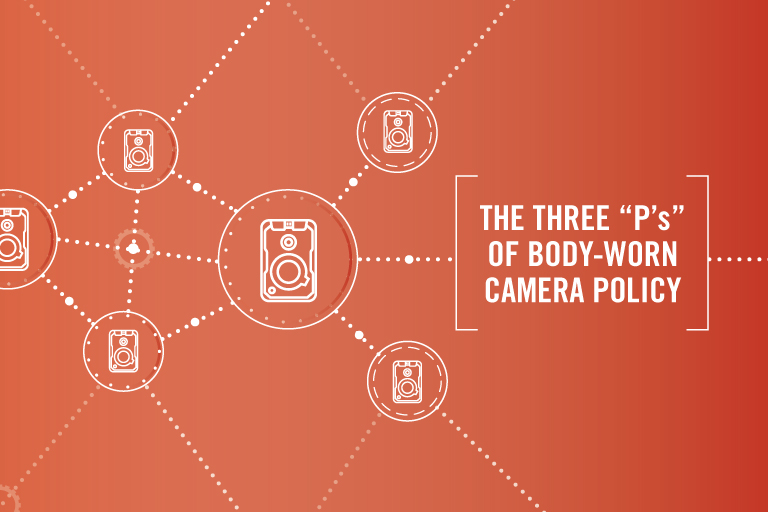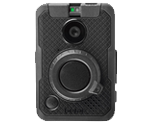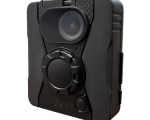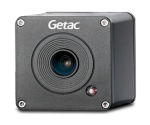
Body-Worn Camera Resource Guide
December 7, 2021
Law Enforcement Resources Directory
December 7, 2021Body-worn cameras can be an invaluable tool for law enforcement agencies. They can capture an unbiased record of incidents and increase agencies’ transparency and accountability. However, they also bring up a lot of challenges around privacy and civil liberties. This is why a comprehensive body-worn camera (BWC) policy is recommended prior to launching a BWC program.
Three “P’s” of Body-Worn Camera Policy
There are three essential parts of a comprehensive BWC policy to consider: purpose, policy, and procedure. Below are questions to address in each part of your policy.
- Purpose – The first section of your policy should explain why you are using body-worn cameras and the value they bring.
Consider these questions while writing: Why does this policy exist? What value will body-worn cameras provide your agency? What value will they provide the public?
Model policy example:
“The purpose of this policy is to provide direction for the use of audio, visual and imaging recording devices including Mobile Video Recording (MVR) devices and Body Worn Camera (BWC) systems. The use of Department-approved body worn camera systems can provide powerful evidence of criminal activity and has proven to be a valuable tool for law enforcement in documenting enforcement members’ honesty, integrity, and professionalism.” – Parker Police Department
- Policy – The policy portion will be brief. Authorize the use of your body-worn cameras and list its intended applications.
Consider these questions while writing: What will the BWC be used for? Evidence collection? Training tool? Officer evaluation tool? Etc. How will that help your agency?
Model policy example:
“A. The body-worn cameras should be utilized to (1) collect evidence that can be used in the prosecution of criminal offenses, (2) record contacts with the public in order to secure unbiased evidence in connection with investigations, (3) allow for supervisory review to ensure that department policies and procedures are followed, and (4) capture footage that would be helpful for training.” – The Bureau of Justice Assistance (BJA), a branch of the Department of Justice has provided this Model Policy
- Procedure – This will be the largest section of your policy and should address how officers will use the BWC in clear, consistent guidelines.
Consider these questions while writing: Who (what job titles) will be using the BWC? When will officers wear the BWC? When should the camera be turned on or off? How do officers communicate to the public that they are recording? How are recordings stored? How are recordings used? How is footage determined to be relevant and what isn’t relevant? How do officers mark footage as relevant? How long is data kept? How will the department use the recordings? Who can view the recordings? Can officers use the recordings to help file incident reports? Who can access the recordings? When will redaction software be used? How is redaction software used? How will recordings be disclosed to the public? What safeguards will be in place to restrict access to recordings? What restrictions are there to BWC use?
In order to guarantee your policy has addressed all of your local, state, and federal laws, it is important to have a legal expert helping with the draft. Talking with other agencies about their BWC policy and any issues they have seen with body-worn cameras is also helpful to make sure your policy is thorough.
Additionally, according to the Bureau of Justice Assistance (BJA), BWC policies “should allow for flexibility as the program and technology evolve.”
From Body-Worn Camera Policy Draft to Dissemination
Once the draft has been completed it is important to have relevant stakeholders both inside and outside the department supply feedback. Ask policy or BWC experts to review your policy and make sure it is sound. Have general counsel make sure all of the laws are addressed. Ask the district attorney to share any concerns, questions, or feedback they have. Gather input from officers, command, and other staff who will use the cameras or have access to the footage.
With that feedback, make the necessary changes and then circulate your policy. From there, it is time to start your BWC training, the next step in launching a successful BWC program. Find out what the four fundamentals of comprehensive training are on our blog.
Model Body-Worn Camera Policy Examples
A survey conducted by the Police Executive Research Forum (PERF) released in April 2018 found that “more than one-third of American law enforcement agencies have already deployed BWCs to some or all of their officers, and another 50% currently have plans to do so.” With those deployments, come a lot of policy examples. Here are a few model policies:
- International Association of Chiefs of Police (IACP) – Find their “Model Policy” here.
- The Bureau of Justice Assistance (BJA) a part of the U.S. Department of Justice (DOJ) has a model policy here.
- Parker Police Department in Colorado worked with the ACLU to create their body-worn camera policy and received praise for its focus to ensure the rights of both officers and citizens. You can find their policy here.
- The ACLU has also created a model act for body-worn cameras which can be found here.
- The Leadership Conference along with a coalition of civil rights, privacy, and media rights groups developed a scorecard focusing on “Civil Rights Principles on Body Worn Cameras.”

Getac Video Solutions is here to help with your body-worn camera needs. With one of the smallest and lightest designs in the industry our BWC could work for you. Contact Getac Video to learn more.






